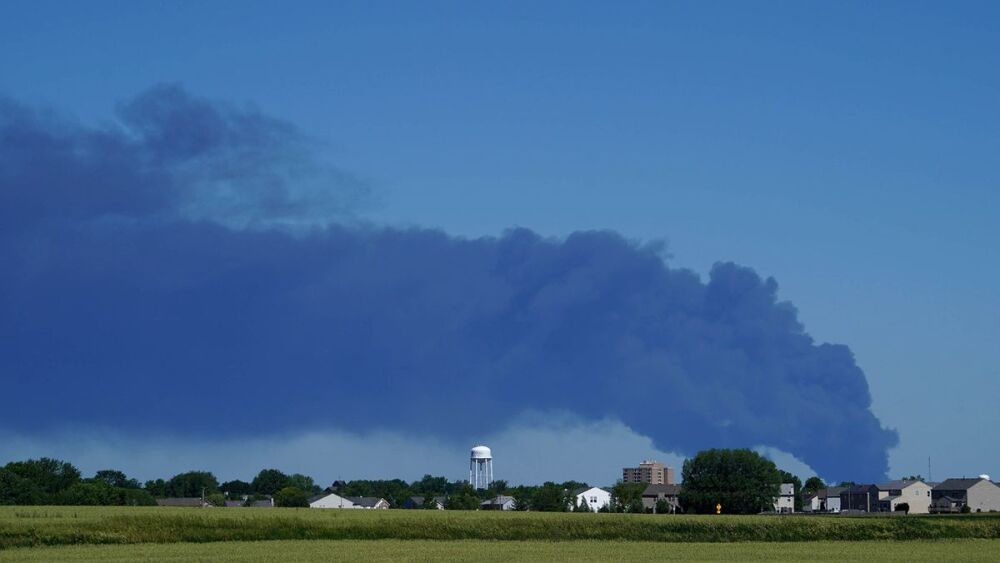The scene was reminiscent of West, Texas, in 2013 – fire at a sprawling plant, a huge explosion rocking the area, and black smoke billowing in the air. Fortunately, the latest chemical plant blaze has not mirrored the West incident with the same level of tragedy – but there are still valuable lessons to learn.
WHAT HAPPENED
At approximately 7 a.m. CST on June 14, a fire was reported at a large chemical/manufacturing building in Rockton, Ill., located northwest of Chicago, just south of the Wisconsin border.
Sometimes, the facility name is all you need to know to have a pretty good sense of potential hazards – in this case, Chemtool. The company manufactures lubricants, grease products and other fluids for a wide range of farming and industrial applications.
[Read the initial report: Massive explosion, fire at Ill. chemical plant; evacuations underway.]
Fire was reportedly showing through the roof when the first fire department units arrived. The massive structure was quickly fully involved, with an explosion rocking the scene.
As I have been on scene, the building has slowly become engulfed in flames. The west side of the building has begun to crumble. pic.twitter.com/0NPd2DsQxY
— Maggie Polsean (@MaggiePolsean) June 14, 2021
Authorities immediately evacuated an area spanning a 1-mile radius of the plant due to the potential hazardous materials being launched into the air. Schools are being used for evacuation centers.
More than 40 agencies and 150 firefighters from Illinois and Wisconsin responded to the scene. The strategy is purely defensive at this point, allowing the fire to burn itself out and minimize environmental factors.
Seventy workers at the plant have been accounted for, and no serious injuries have been reported, although one firefighter was injured and transported from the scene.
WHY IT’S IMPORTANT
Large manufacturing facilities such as these are scattered across the landscape of America; many of our communities have plants just like this one. Understanding the hazards present and the risks they pose to the community is an essential first step in preplanning response efforts to these incidents.
Use this opportunity to review your own preplan program and contingency plans:
- How will your agency handle evacuations of thousands of people spanning a 1-mile radius?
- Has your agency already developed your emergency response plans for this kind of fire?
- Who are your mutual-aid partners who will assist?
- What is the closest hazmat team that can aid in such incidents?
- To what level of hazmat response are your members trained?
- Are they ready for a fire like this?
Watching the footage from the incident, I’m amazed there have been no significant injuries. The visuals are so reminiscent of West, Texas, where an ammonium nitrate explosion at the West Fertilizer Company storage distribution facility killed 15 people, most of whom were first responders from area fire departments. A 2014 NIOSH report indicated that the West firefighters were unprepared for an incident like the one at the fertilizer facility. Bottom line: Understanding the dynamics of your first response area, especially to this kind of facility, is critical to all of our safety.
WHERE DO WE GO FROM HERE?
Chemtool representatives have professed that they will work with local authorities to determine the cause. To avoid both water reactivity and additional runoff, the decision has been made to allow the fire to burn itself out. This will undoubtedly result in poor air quality, resulting in additional 911 and EMS system strain for days.
The local fire chief expects the fire to burn for three or four days. It may take months, if not years, to fully realize the environmental impact on groundwater contamination.
Time lapse of the massive smoke plume created by the #Chemtool fire as seen from Beloit, WI.
This begins at 8AM this morning. @MyStateline @CandiceKing @themcconicowire pic.twitter.com/3lPtAlUUYX
— Joey M. Marino?️ (@WxJmar93) June 14, 2021
The Illinois governor has declared a state of emergency in order to mobilize the necessary emergency response mechanisms.
FireRescue1 will follow this evolving story as more information becomes available.
Today, The #SalvationArmy Emergency Disaster Services staff and volunteers responded to the #Chemtool fire in #Rockton. EDS provided meals, snacks, and hydration to first responders and evacuees. #RocktonFire #news #disasterrelief @SalvationArmyUS pic.twitter.com/qMqRdqTXTR
— The Salvation Army - Chicagoland, Northern IL, NWI (@salarmychicago) June 15, 2021













